About grenades and grenadiers
Soviet military encyclopedia
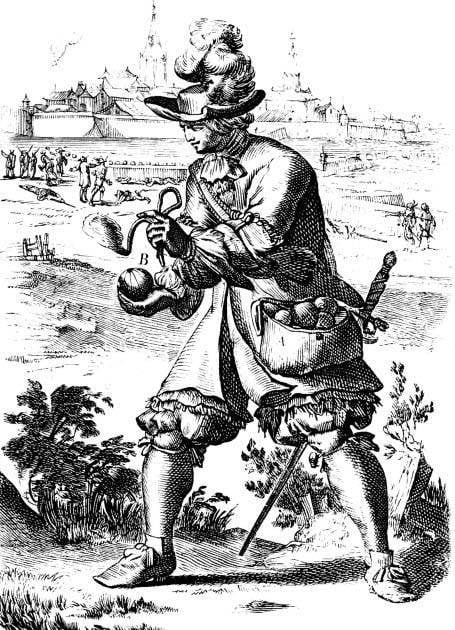
The use of grenades has a centuries-old history. The first progenitors of grenades were known before the invention of gunpowder. They were made from the bark of trees, papyrus, clay, glass were used mainly in the defense of fortresses and filled with quicklime. Such grenades were used in Fustat - a city that in ancient times, before the founding of Cairo, was the capital of Egypt.
In ancient documents it is reported that "the miasms of quicklime flowing from pots when they break, crush and strangle the enemy and the soldier bring him upset." The choice of material from which the grenades were made was determined mainly by the consideration that the vessels should break up into small pieces when dropped and disperse their contents as far as possible.
In Europe, the first records of exploding shells, which were thrown by hand into enemy clusters and hit him with shrapnel and fire, date from the 13th – 15th centuries. Count Solms, in his work “Review of Military Affairs”, referring to the year 1559, writes: “A round ball of burnt clay of hefty thickness, filled with gunpowder is strongly torn and gives a strong blow. If you make it from a thin material, it breaks easily and gives a weak blow. Such a ball should have a long thin neck. It should be filled with powder powder (pulp), firmly stuffed in the neck to slow down the burning, and a tinder who slowly grieves, comes to the powder of the powder. In addition, the ball at the neck should have two ears. Through them it is necessary to pass a piece of rope with a knot on the end. Such a ball is convenient to throw into the crowd of the enemy. When the fire gets to the seed, the ball explodes and hits far around itself. ”
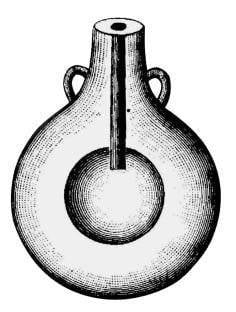
A 16th-century gunsmith Sebastian Gele from Salzburg, in one of his works, for the first time calls explosive balls grenades or borderons, apparently by analogy with pomegranate fruits, which, falling to the ground, scatter their seeds far away.
He proposed to make grenades from copper, iron, wood, glass, clay, and even provoschennogo paintings. Wooden and cloth balls were required to be covered with a layer of wax, bullets pressed into it and then coated with wax again. The garnet equipment says the following: “Put a ball half full of gunpowder and shake it well, then put a few ounces of mercury and pour powder again to fill the ball, finally insert the seed with flint into the pilot hole.”
Another recipe recommends that in addition to mercury add more bullets. The meaning of mercury is unclear here. However, another author, Wilhelm Dillich, in his Kriegsschule, dating back to 1689, indicates a similar method of making grenades. The clay body of the grenade was filled with black powder (1 pound), mercury (1 lot) and iron bullets. Wick served as a tinder, placed in the seed hole.
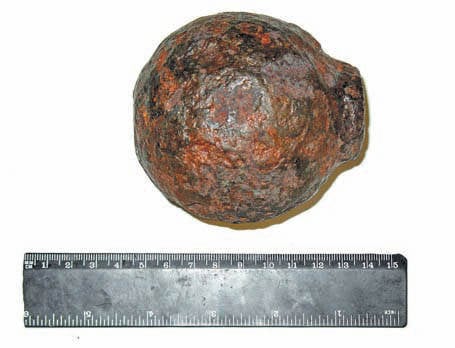
In the work of Kazimir Simenovich “Vollkommene Geschutz-Feuerverk und Buchsenmeisterey Kunst”, published in 1676, in German, grenades are given the following definition: “These are completely round iron balls called granatae ma-nuales, since they rush at the enemy mostly with their hands. In size, they are equal to the cores in 4-6 and even 8 pounds, but they weigh X times less. Pomegranates are filled with plenty of gunpowder. Littered, they fly apart into a large number of pieces that are dangerous to the enemy, which crumble like seeds from a ripe fruit and cause serious injuries to everyone close. ”
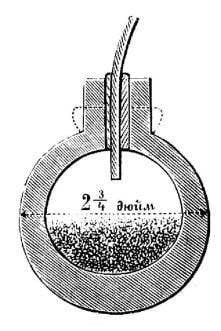 Kazimir Simenovich also suggested making grenades from glass, pottery clay and other materials.
Kazimir Simenovich also suggested making grenades from glass, pottery clay and other materials.The creation of grenadier units in various armies In France, the first grenadiers appeared during the Thirty Years War. In the Guards regiment of King Louis XIV in 1645, the grenadiers had 4 men in each company.
In 1670, the first grenadier detachment was formed in France, consisting of soldiers trained in the use of grenades. The detachment was made up of volunteers who had combat experience in the assault and defense of cities. In addition, only one type of grenade was taken into service with this unit. By 1672, such units were already in the 30 regiments, and a few years later, in all the regiments of the French army. In 1674, in France, a detachment of horse grenadiers appeared.
K. William writes in his book The History of Firearms weapons. From ancient times to the 20th century ":" ... At 1678, John Evelyn visited the army camped on the Hanslow wasteland, and saw it as an innovation: "... a new kind of soldiers called grenadiers, who are skilled at throwing hand grenades, which everyone has full bag. Their caps are fur with a copper top, exactly like a Janissary, which makes the view very fierce, while others have long caps hanging from behind. ”
Austrian Grenadiers
In Prussia at the end of the 17th century, each Guards company had an 10-12 grenadier, which in combat formation stood on the right flank of the battalion. In the year 1698, an additional Grenadier battalion of five-men 100 men was created in each company.
The beginning of the XVIII century - the golden time for the grenadiers. Grenadier units appear in all the armies of the world. But by the beginning of the next century, as firearms developed, the grenadier units were transformed into a type of military force that is selective in its composition, but does not differ from the rest of the infantry in armament.
In Austria, every company of an infantry regiment was listed for an 8 grenadier. Later, two Grenadier companies were created in each infantry regiment. These companies existed until 1804. The grenadiers had weapons and equipment that did not differ from the weapons of other soldiers, but they additionally carried three grenades in a bag. In these companies recruited large, physically strong people, while the advantage was given to people of "terrible" appearance.
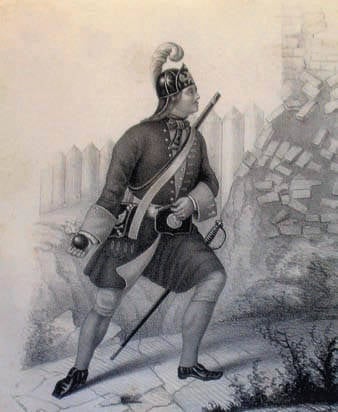
Russian grenadier of the early 18th century
Grenadier units in Russia
In Russia, hand grenades began to be used at the end of the 17th century. At about the same time, the first units of the grenadiers appeared. In 1679, during a campaign in Kiev in a wagon train, a regiment of Colonel Kravkov transported materials for the manufacture of hand grenades.
Before the Crimean campaign, General Gordon proposed to have one company of grenadiers in each infantry regiment, having trained the most dexterous, strong and intelligent soldiers in the handling of grenades. There is a written mention that the regiments of Gordon and Lefort marched on to Kozhukhovo, having in their composition one grenadier company. At the same time, Grenadier teams appeared in the Transfiguration and Semenov regiments. After the first march on Azov (1695 year), these teams were consolidated into separate companies. Grenadiers appeared in the Archers' shelves during the second Azov campaign (1696 year). After 1699, grenadier companies were established only in 9 infantry regiments formed by Prince Repnin.
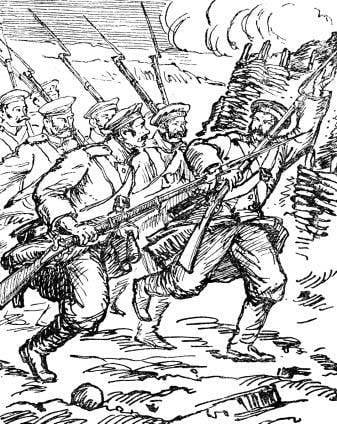
In 1704, according to the presentation of Field Marshal Ogilvy, grenadier companies were organized in all the regiments of the infantry and cavalry. By order of Peter I, companies were made up of "selected people."
By 1709, already all the infantry regiments had such a company. There were three officers in each company, 7 non-commissioned officers and 132 soldiers. Four years later, the Grenadier companies were expelled from the regiments and consolidated into five Grenadier regiments. In each such regiment there were two battalions. At the same time the first horse-grenadier regiments were created. It is curious that these companies did not lose contact with their "native" units, and were considered to be on a long-distance business trip, receiving all the allowances from their regiments. After the death of Peter I, the value of the grenadier begins to gradually fall.
Grenadier regiments were renamed Musketeers and one grenadier company was left in them. In 1731, these companies were also disbanded, having distributed the grenadier to the musketeer companies for 16 people each. In 1753, the grenadier companies reappeared - they were now one per battalion. Three years later, they were again brought to the shelves. In 1811, these regiments were consolidated into divisions, and in 1814, divisions were brought into corps.
The development and use of hand grenades in the second half of the XIX century
By the middle of the 19th century, hand grenades became mainly a serf weapon, used
when repelling an assaulting enemy. In Russia, the supply of grenades to the fortresses was guided by the following rules: for every 30 fathoms of the defense line, an 50 grenade was used. For every 100 grenade, 120 fuses and 6 bracelets were released. Throwing grenades at the enemy was calculated by three people. The first number threw grenades, 2-th charged them, 3-nd brought ammunition. This calculation consumed up to 10 grenades per minute. In addition, the grenades could roll off the shafts through the prepared gutters.
In Sevastopol, hand grenades were used a little, due to the insignificance of their reserves. During the war, only 1200 glass grenades were found in the Sevastopol arsenals for boarding battles. According to the report of Admiral Kornilov from 15 in March 1854, these grenades were transferred to coastal fortifications. According to the memoirs of a contemporary, many French died during the storming of the bastions from these grenades.
Naturally, these small stocks did not last long for the defenders of Sevastopol. Here is an excerpt from the memoirs of a participant in those events, a retired Colonel of Guard George Chaplinsky concerning the defense of Malakhov Kurgan: “... Despite the strong carcass fire they were met with, the French managed to climb the parapet, but the Podsky regimental ranks and the Kursk militia squad managed to drop them in the ditch Struck by the rifle fire and stones, the surviving French fled to the near trenches and craters, derived from the camouflage memorable to all ... ".
Pay attention - the enemy is down in the moat, and there is nothing to hit him. They shoot rifles at him and throw stones at him! Such situations are repeatedly described in the memoirs of veterans. With the necessary number of hand grenades, the enemy could have inflicted much more damage here.
General view and device 3-pound hand grenades
And here are some more examples from the memories of Sevastopol: "... small enemy hand grenades were put into five-pudder mortars in a cylindrical tin box, so that they flew all together and when they fell at the site of work they did a lot of harm working ...".
The enemy did likewise: “... in the half of the siege, the enemy began to throw us out of mortars, mainly in trenches of baskets filled with grenades, between fifteen and twenty. At night, the fall of these grenades was especially beautiful: having risen to a certain height, they disintegrated in all directions with a fiery bouquet ... ”. Or another: “... and in our case the powder keg will be imposed by enemy hand grenades, sometimes assembled by fragments and lying around enemy cores; a barrel with this present will be put in the mortar and will be allowed, in retaliation, to the enemy: they say, choke on the French with your own good ... ". “... A hand grenade is often thrown back into the enemy trench by hand. This was not difficult, since in some places the enemy apros at the end of the siege came very close, at sixty paces, no more ... ". Given the shortage of their own grenades in Sevastopol, we are probably talking about captured and unexploded French hand grenades of the 1847 sample of the year.
After the end of the war, the time has come to sum up the sad results. It was necessary to re-equip the army in accordance with the requirements of the time. Among other things, changes also affected the grenades.
In 1856, with an artillery order, all fuses igniting from the wick were replaced with tampers. In the same year, the head of the Caucasian artillery Meyer was given the task of creating test samples of grenades in the Tiflis laboratory and testing them. Meyer's report was presented in 1858 year. In this report, the device of all fuses in service was considered unsatisfactory. At the same time, a description of the fuse and grenades created by the lieutenant Kazarinov was attached. After improving this fuse and increasing the charge of the grenade, it was put into service in 1863.
The adopted fuse had a tube made of solid wood. The channel of the tube was tightly packed with powder at the rate of burning seconds on 3. Terrochny mechanism consisted of two brass tweezers with notches, one included in the other. Their contiguous surfaces were coated with a mixture of bertolet salt and sulfur. For tightness, the tube was covered with a special varnish and wrapped with a canvas tape impregnated with a water-repellent compound. The body of the grenade was made of cast iron, had a spherical shape. Inside the case was placed a charge of black powder weighing 15-16 spools (60-65 grams). The leather bracelet had a carbine for engaging the ring of the float. This grenade was put into service as an 3-pound hand grenade.
Grenades stored in warehouses and arsenals failed due to the action of moisture. Fuse became dangerous due to frequent lumbago retarding composition. In addition, a constructive flaw was revealed. Some grenades had fuse graters made of too hard metal, with blunt teeth. This led to the fact that after the throw the grenade was left hanging on the bracelet with the already burning fuse.
To assess the merits of hand grenades, which are in service, the Artillery Committee in October 1895 of the year suggested to the fortress artillery "... to practice with 3-pounder hand grenades with a charge in 15 zolotniks ...". The first to respond was the head of the artillery of the Vyborg fortress - probably because of the proximity. He asked not to conduct such classes, as this is a danger to those who throw. Having considered the request, the committee decided not to conduct classes in the Vyborg fortress and wait for information from other fortresses.
In 1896, the Artillery Committee ordered the removal of hand grenades from use "... in view of the emergence of more advanced means of defeating the enemy, enhancing the defense of fortresses in the moats and the insecurity of hand grenades for the defenders themselves ...".
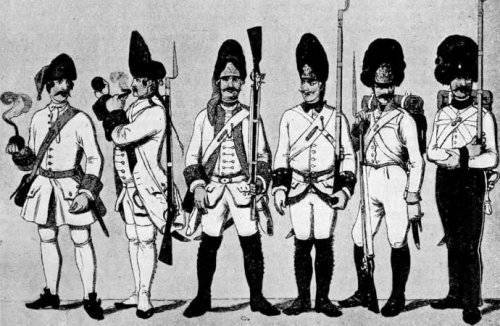
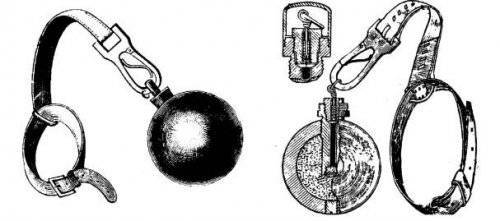
Information